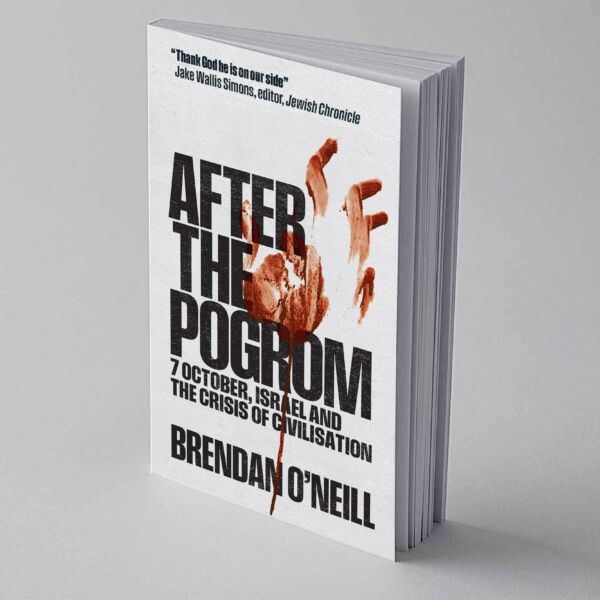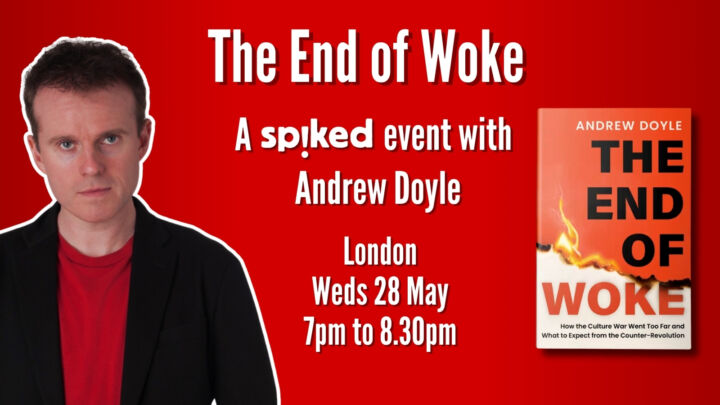‘Toys can be fun. They can also kill’
Fueled by irrational fear and a dash of angst about the 'yellow peril', Channel 4's investigation of dangerous Xmas toys was like an episode of Brass Eye.

Want to read spiked ad-free? Become a spiked supporter.
Thomas the Tank Engine, Sesame Street’s Big Bird, Barbie, Magnetix, Polly Pocket, not to mention Dora the Explorer, have come in for some poisonous barbs this year. In cases like Thomas’s, this was due to his toxic paint; in others such as Polly’s, loose magnets. But for all, the outcry was such that major toy manufacturers, including Mattel and Fisher Price, withdrew over 20million toys from sale worldwide. Never ones to miss a fear-laden bandwagon, the intrepid band of investigative journalists from Channel 4’s Dispatches team duly jumped on board with their Christmas special ‘How safe are your Christmas toys?’ The answer, predictably, was ‘not very’.
The programme approached its ostensible topic – the use of magnets in toys – like an episode of the current affairs satire Brass Eye. It even had that lugubrious sing-song commentary: ‘On Christmas morning children will be unwrapping a particular kind of toy, toys that rely on a fairly new type of technology – tiny super powerful magnets… As toys, magnets are creative and fun. They can also kill.’ Fridge doors have never seemed so terrifying. But for Deborah Davies, the programme’s presenter, this was no time for flippancy, not when you’re dealing with ‘the potentially fatal attraction of children and magnets’. (Within a programme so po-faced that it condemned ‘an expandable lizard’, it was difficult to know whether the pun was intentional.) This nagging sense of Panorama pastiche was not simply a problem of presentation. Rather, it was because its form, from the portentous score to the whistleblown indignation, was more than a little at odds with the unrevealing nature of its content: children put things in their mouths they shouldn’t, even when there are warning labels.
This isn’t to diminish the damage ingested magnets can inflict on human innards. Two or more magnets, if swallowed at certain intervals can clump together through opposing intestinal walls. That’s painful enough, but if they rip through, they will leave victims ‘with perforated guts’, which is horrific. Fortunately, for the audience’s stomachs, we got to see Professor Mike Gibbs, director of the Sheffield Centre for Advanced Magnetic Materials and Devices, demonstrate the effect using a couple of pink balloons – definitely more Casualty than ER. But, amateurish mock-ups aside, do magnets really merit the fear fostered in ‘How safe are your Christmas toys?’
Since 2000 there have indeed been quite a few tragic cases of children swallowing multiple magnets, or magnets and metal, and suffering intestinal damage as a result. Dispatches itself featured the story of nine-year-old Chantelle, who, having ingested a number of magnets while pretending they were lip studs, started to cough up increasingly dark bile. Doctors just managed to save her life. She was one of 23 children admitted to hospital with similar injuries over a remarkable three-month period during 2000. However, as the programme states, the origins of these magnets is still unclear. In America, the links with toys – in particular, Polly Pockets and Magnetix construction sets – have been clearly established (1). And in Seattle in 2005, two-year-old Kenny Sweet became the first and only fatality, having ingested several magnets from his older brother’s Magnetix construction set.
However, as traumatic and tragic as these cases are, ‘How safe are your Christmas toys?’ did not quite tell the whole story. According to the American Consumer Product Safety Commission, in terms of the 152,400 toy-related injuries in 2005, the year of Kenny Sweet’s death, magnets accounted for less than 0.5 per cent and so did not even merit a mention. In fact, there were just 20 magnet ingestion cases in total identified between 2003 and 2006 (2). And of the 20 toy-related deaths in 2005, most involved balls and riding toys, with choking, aspiration and being hit by cars as the main cause. It’s interesting to note that the biggest killer, the ball, which caused six under-15s to choke to death, has not prompted the same outcry, let alone a Dispatches documentary; 2006 saw virtually the same pattern of injuries and deaths but with no mention at all of the dastardly magnets (3). So how could something as essentially unremarkable as the recent use of magnets become such an overwrought cause célèbre (4)?
One part of the answer lies in risk aversion. So, to the extent that risk, or rather, its elimination, dominates a contemporary Western purview, the attitude to children alters too. Increasingly, the anxieties of atomised adults – from a suspicion of others to a sense of powerlessness – are projected on to children. As children must be protected whatever the cost – even the cost of a decent childhood – they become the object of the modern bureaucrat’s regulatory dream of absolute safety. As Stephen Russell, secretary general of the European consumer protection organisation ANEC, remarked in the Dispatches show: ‘Children are the most vulnerable in our society and we should simply not be exposing them to that danger.’ Working alongside him in the Mecca of managerialism, Brussels, Arlene McCarthy, MEP and chair of the European Parliament’s Consumer Protection Committee, concluded that ‘in the interim I’d follow the precautionary principle and take
But accepting that a heightened consciousness of risk does play a role, why have toys using magnets been singled out? One key factor is that balls and tricycles are too familiar to lend themselves as easily to febrile speculation as the ‘fairly new type of technology – tiny super powerful magnets.’ Just as important however is China’s role as exporter of over 80 per cent of the world’s toys (5). Hence, surveying the haul of dodgy toys from a Blackpool toy shop, Deborah Davies tells Dispatches viewers ominously, ‘almost everything we bought came from China’.
The problem with China, so Dispatches argues, is that its businesses pay scant regard to rules and regulations. Bolton-based importer Dave Hilton tells the Dispatches team that if you ask a Chinese toy manufacturer for the appropriate documentation – for example, the CE (Conformité Européenne) mark – they’ll print some off just to get it through customs. You simply can’t trust these Chinamen, you see. Reflecting on the toy industry in general, Simeon Osborn, an American lawyer, said: ‘What I would have liked them to have done was to have immediately taken every dangerous toy off the shelf, but that didn’t happen, and realistically, that’s not going to happen because that’s not how large corporations work – they are in business to make money.’ It is in this context that the perceived role of China makes sense: China represents everything that the contemporary perception of an out-of-control world fears. It is the unacceptable face of business interest and economic development, beyond restraint, bereft of compunction or conscience, dominating the consumer’s world. Nothing, not even children’s intestines, will impede China’s inexorable economic growth.
But for all its doom, foreboding and kicking-against-the-pricks posturing, this was a desperate, melodramatic affectation of investigative TV journalism. The dangers posed by magnets in toys were not so much investigated as projected, from irrational fears to outright prejudice. It drew sustenance from the very fears and anxieties it then proceeded to exacerbate. Something of this insight emerged in the most arresting bit of footage of the programme. Deborah Davies subjected the director general of the British Toy and Hobby Association, David Hawtin, to a barrage of accusatory questions. ‘Why, despite the medical reports and consumer complaints, didn’t [the toy industry] act faster?’ she asked. Mr Hawtin went completely silent, save for the sound of his mouth dessicating. Cruelly, the camera lingered for 10 seconds or more, as if to expose his silence as an admission of guilt. After an attempt to answer another question floundered, he suddenly waved, much like a drowning man, and said ‘you’re overdoing this a bit, aren’t you?’ Quite.
Tim Black is a regular film and TV reviewer for spiked.
Brendan O’Neill asked whether China’s toxic toys were poisoning YOUR child. James Woudhuysen raised three cheers for China’s economic miracle. Nathalie Rothschild pointed out that where China was once criticised for its ‘red authoritarianism’ it now wins plaudits for its eco-authoritarianism. Sheila Lewis asked whether the rise of China should be seen as a threat or an opportunity for the West. Daniel Ben-Ami asked who’s afraid of economic growth?. Or read more at spiked issue Modern life.
(1) Gastrointestinal Injuries from Magnet Ingestion in Children
(2) Gastrointestinal Injuries from Magnet Ingestion in Children
(3) Toy-related Deaths and injuries, Calendar Year, 2005
(4) Toy-related Deaths and injuries, Calendar Year, 2006
Who funds spiked? You do
We are funded by you. And in this era of cancel culture and advertiser boycotts, we rely on your donations more than ever. Seventy per cent of our revenue comes from our readers’ donations – the vast majority giving just £5 per month. If you make a regular donation – of £5 a month or £50 a year – you can become a and enjoy:
–Ad-free reading
–Exclusive events
–Access to our comments section
It’s the best way to keep spiked going – and growing. Thank you!










Comments
Want to join the conversation?
Only spiked supporters and patrons, who donate regularly to us, can comment on our articles.